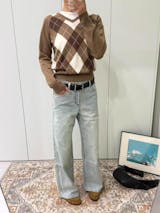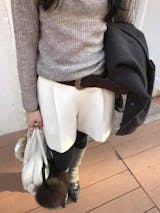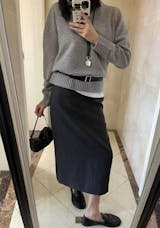Fashion Psychology: The Psychological Principles Behind Outfits

Fashion Psychology: The Psychological Principles Behind Outfits
Fashion psychology explores the impact of clothing on personal emotions, identity, and social interactions. In this article, we will delve into how to express oneself through clothing and how fashion influences our mental states and interpersonal relationships.
1. Clothing: A Tool for Self-Expression
Clothing is a powerful tool for self-expression. People showcase their style, values, and personalities through what they wear. Different colors, patterns, and styles can convey different messages, thereby influencing how others perceive us. Attire not only reflects our personal style but may also indicate our profession, social status, or cultural background.
2. Fashion and Emotion
Clothing has a significant impact on a person's emotions. Wearing clothes that one likes can boost confidence and mood. Studies show that well-dressed individuals are more confident in social situations and are more likely to succeed. Additionally, specific outfits can provide psychological comfort, helping people cope with stress and anxiety.
3. Fashion and Identity
Fashion enables people to explore and express their identities. Adolescents and young adults, in particular, tend to explore themselves and express their personalities through clothing. Dressing can be an affirmation of specific cultures, interest groups, or social movements. It allows individuals to visually showcase their inner selves.
4. Fashion and Social Interaction
The way we dress affects our interpersonal relationships and social interactions. People often form first impressions of others based on appearance. Fashion can be used to attract others, establish connections, and even, in some cases, assert authority or demonstrate professionalism. Attire can also serve as a social symbol, indicating that someone belongs to a specific social group.
5. Fashion and Cultural Influence
Different cultures have different views and norms regarding fashion. Globalization has led to the mutual influence of fashion styles around the world, but traditional and cultural values still play an important role in fashion choices. Understanding different cultural perspectives on fashion can help us better appreciate and respect diversity.
Conclusion
Fashion psychology provides us with a unique perspective that allows us to understand how clothing affects our psychology and behavior. Through fashion, we can not only express ourselves but also influence our mood, confidence, and interpersonal relationships. Fashion is not just the clothes we wear; it is a way we interact with the world, an external manifestation of our personality and emotions. It enables us to create our own stories in daily life and establish deeper connections with the world around us. Our attire reflects our mental state while also shaping our self-perception. As the fashion industry continues to evolve, we are constantly exploring and reshaping our identities. Fashion psychology reveals the deeper significance of this process, helping us to better understand ourselves and find our voice in style. Ultimately, fashion is a personal journey, a way to seek and express our true selves.





